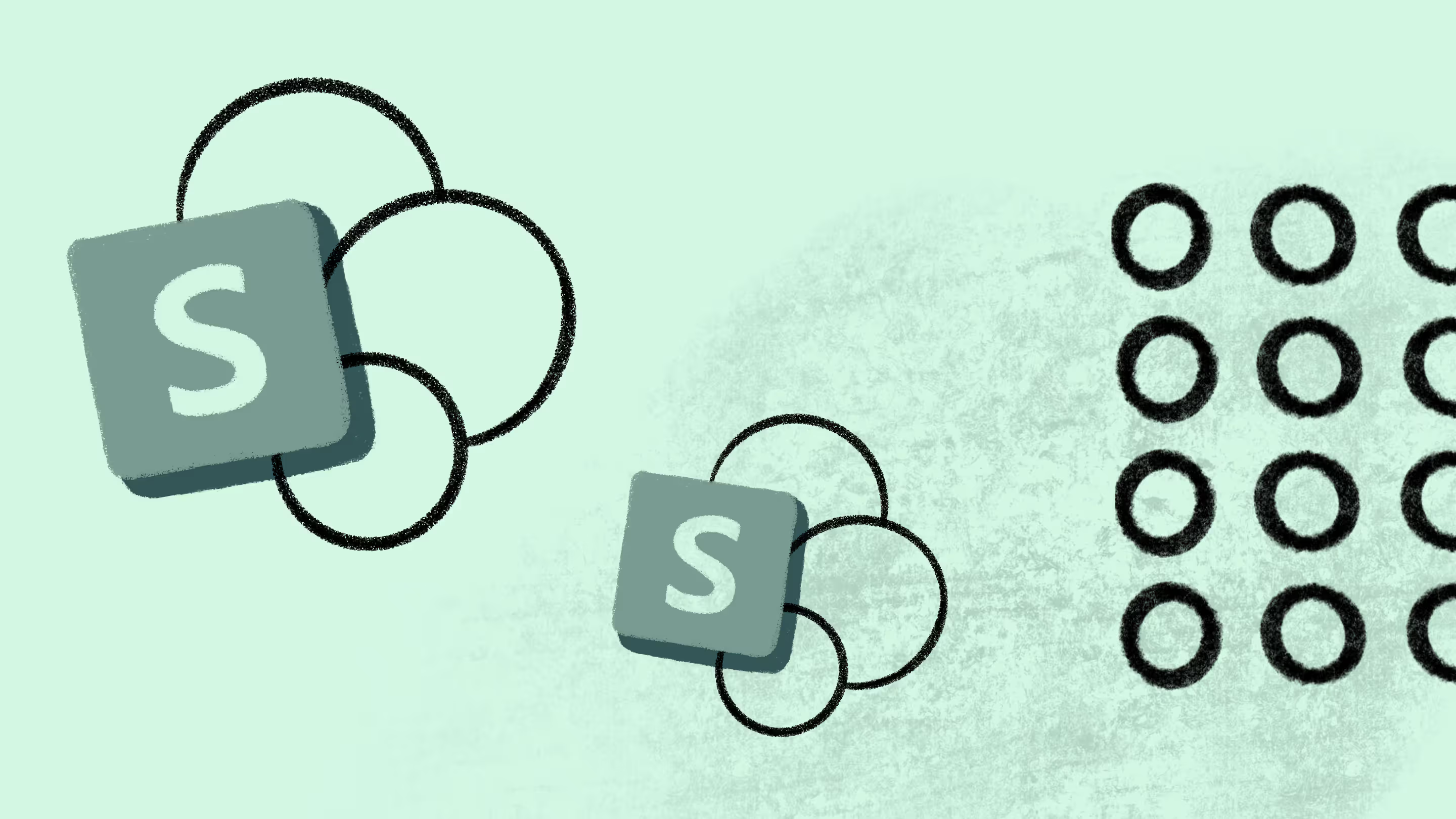How to assign Microsoft Teams roles in the admin center

Table of contents
Appointing, changing, and organizing roles in Teams couldn't be easier. Check out how to do it and why having control over roles and permissions is so crucial while managing Teams.
So your company relies on Microsoft Teams to unify communications and have users collaborate more easily. Good job. But are you sure you're making the best of it? Like, the best?
To benefit from Teams 100 percent, try designating the right roles to ensure every user has the appropriate levels of access and responsibilities. That way, you'll be making teamwork a breeze while securing your data!
You can easily organize and appoint roles in Microsoft Teams Admin Center. This hub helps you manage your Microsoft Teams environment with advanced tools for overseeing your settings and controls.
This article will show you how to assign user roles in the Teams admin center, so you can create a superior user experience, simplify your job, and boost productivity. Let's get to it!
What are roles and permissions in Microsoft Teams?
When you operate so much of your business online, you must prioritize maintaining a secure, structured tenant that suits your organization's needs. So before you create a team or channel, you must consider which employees need to access the data, conversations, and other proprietary assets you store on Microsoft Teams.
With Microsoft Teams, every user must be assigned a role, whether it's as an owner, member, or guest. These roles determine what the user can access and control in your environment.
Your Teams administrator will determine and set the associated permissions, relying on Microsoft's enterprise identity service Azure Active Directory (Azure AD) to support role and permission management.
Brush up on why Microsoft Teams permissions are necessary for managing teams, controlling access, and ensuring communication align with your organization's policies.
Tip: Delegate a few owners to manage a team. When you have multiple users overseeing a team, it lightens the workload! You can also better guarantee member accountability, prevent orphaned (ownerless) teams, and boost content security.
Microsoft Teams roles and associated permissions
When you understand the primary roles available in Microsoft Teams and their respective user permissions, you can empower users to contribute to and protect your Teams environment.
- Owners—Owners have complete control over the team and its settings, with full access to all the team's data. Owners can add and remove members, change and manage Team settings, and oversee channels.
- Members—Members have more limited permissions and user access. They can participate in conversations, join meetings, create and edit files, and view team activity. However, they can't control the environment like a Microsoft Teams admin or access team-wide settings.
- Guests—Typically, a guest is someone from outside the organization you've invited to collaborate with your team—perhaps a client or other important stakeholder. When a user has guest access, they have very limited permissions. Guests can only participate in specific channels and conversations, which the Teams administrator determines.
Microsoft Teams Administrator roles and associated permissions
Beyond the three essential roles of owner, member, and guest, you can also use Azure Active Directory to assign Microsoft Teams Administrator roles.
- Teams Administrator—Oversees and creates Microsoft 365 Groups.
- Teams Communications Administrator—Manages all Microsoft Teams features associated with calls and meetings.
- Teams Communications Support Engineer—Troubleshoots communications issues using advanced tools.
- Teams Communications Support Specialist—Similar to the Teams Communications Support Engineer, but they can only troubleshoot issues using basic tools.
- Teams Device Administrator—Manages all your organization's devices configured for the Microsoft Teams Environment.
How to decide which roles are appropriate for which team members
You might understand the importance of designating the appropriate roles. But as the Teams administrator, you may need help determining how to actually make those assignments.
Check out some best practices to help you ensure each team member fulfills their job requirements in a secure collaborative environment:
- When assigning admin roles in Teams, consider the responsibilities and permissions required for different team members based on their functions and duties.
- Team owners should be employees with administrative or managerial responsibilities who need to control the team and your org-wide settings.
- Members should be individuals who collaborate and contribute to your business's work but don't need complete administrative control.
- Guests should be individuals from outside the organization who need access to specific channels or conversations but without access to sensitive data or team settings.
For hybrid environments, organization can quickly and securely conquer end-user management by establishing a solid Microsoft 365 governance strategy.
Risks of incorrect role assignments
Designating roles in Microsoft Teams can simplify team management and collaboration. However, assigning particular user roles or Teams admin roles to the wrong person can expose your business to significant risks. These are:
- Security vulnerabilities—Giving out user management rights and greater control could enable people to make inappropriate changes. They might delete channels, change a team name, create new teams, or execute another action that can disrupt your operations. They may also gain unauthorized access to sensitive information.
- Confusion—Assigning an incorrect role can lead to chaos and quality issues, as people might be unclear about managing the responsibilities associated with a role. For example, you might designate someone as an owner who isn't familiar with your organization's meeting policies, rules around using meeting features, or protocols around group creation.
- Reduced productivity—When you assign admin roles improperly, be ready for inefficiency. For example, someone might need device administrator access, but they don't have the necessary permissions to perform their tasks. On the other hand, your current assigned admins may move slower if they don't have adequate training.
Want to avoid this? Consider role assignments carefully, then create a documented strategy to ensure your organization proactively approaches roles on Teams. Communicate your plan clearly to team members so everyone's on the same page. That way, you can all collaborate harmoniously and use the app in a way that's aligned with the team's objectives.
It's also important to understand Microsoft Teams channel roles so you can further keep confidential information safe.
How to assign roles in Microsoft Teams
Now that you understand the different roles available for Microsoft Teams and the importance of designating the right roles, it's time for action! Here's how your organization's Microsoft Teams admin can quickly assign a role.
- Open up the Teams Admin Center. Remember, you need to have the proper credentials to access this feature!
- Click on Teams to expand a drop-down menu.
- Select the option to "Manage teams."
- Click on the necessary team name under the display name column.
- Select the Members tab.
- Once there, you can choose and designate roles, such as owner or moderator. You can also add new members or remove members.

Microsoft Teams roles FAQ
To help you navigate assigning roles in Microsoft Teams, we've compiled a list of frequently asked questions (FAQ) to clarify the process.
How do I manage role assignments in Microsoft Teams?
You can manage role assignments in the Microsoft Teams Admin Center by adding or removing members and changing team settings. Remember, regularly review and update role assignments as team member responsibilities and permissions change.
What happens if I assign the wrong role to a team member in Microsoft Teams?
Assigning the wrong role can lead to security risks, like unauthorized access to sensitive information or changes to team settings. Carefully consider role assignments and communicate them clearly to team members to ensure they are aligned with the team's objectives and promote effective collaboration.
Can I customize roles in Microsoft Teams?
No, you cannot customize roles in Teams. However, you can create custom roles using Azure Active Directory (Azure AD) alongside PowerShell, Microsoft's cross-platform task automation solution.
PowerShell allows IT admins to save time and manage their workload more efficiently. Primarily, they can automate menial tasks across the Microsoft 365 environment to avoid the common challenges associated with scripting limitations.
How do I revoke a role in Microsoft Teams?
Your organization's communications administrator or Microsoft Teams admin service administrator can revoke roles in the Teams Admin Center. They can either remove a member or change the settings.
When you decide to restrict users who previously had a different admin role, you need to be transparent and communicate these revocations to team members. You don't want the decisions to seem arbitrary!
If your employees understand the reasons for the change, you can maintain a positive work environment and continue to ensure a smooth teamwork experience.
Unlock Microsoft 365's full potential to maximize productivity
Mastering the art of assigning roles in the Microsoft Teams Admin Center will help you create your business's ultimate dream team. With the proper structure, you'll see your employees operating together like a well-oiled machine, conquering projects and smashing goals.
Remember, assigning roles isn't a one-and-done scenario! You need to review and adjust as your business needs change regularly, so everyone has the permissions to carry out their tasks.
Want to go beyond considering roles in Microsoft Teams to learning how to optimize the entire Microsoft 365 suite of applications? Empower your end users by checking out Microsoft MVP Vlad Catrinescu's game-changing Microsoft 365 strategy tips.
.jpg)


.svg)
.avif)
%20(1).avif)
















